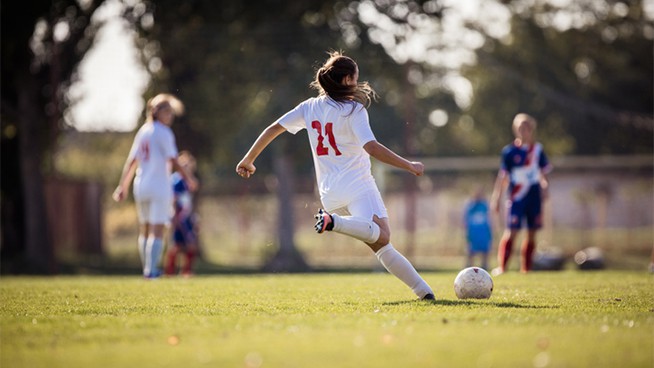Stability Training Can Improve Your Agility and Range of Motion
To improve your agility, speed and power, you need stability. If you don’t have good balance and solid footing, if you’re wobbling all over the place during competition, you’re wasting valuable time and energy and putting yourself at a disadvantage against your opponent.
Traditional stability exercises—including static, single-leg stance positions such as Single-Leg Balance on an Airex Pad or the use of a BOSU ball—do not fully train for stability.
RELATED: Learn how to improve full-body stability with 3 BOSU exercises.
For your body to be stable, your joints must have good mobility. For instance, if your hip or ankle has poor mobility, your knee must increase its mobility to pick up the slack and cannot do its real job, which is to stabilize the body.
Below are some exercises that will increase your range of motion and dynamic stability. They will increase your power, explosiveness and ability to change direction quickly and efficiently in both a symmetrical and asymmetrical (double- and single-leg or split) stance.
Note: The following stability exercises may not be appropriate in an acute rehabilitation setting, where loaded positions and dynamic movement could impede the healing process and cause further tissue damage.
- Tall Kneeling or Half-Kneeling Chop & Lift: For anti-rotational control of the core in diagonal patterns—”quadrants” (2 sets; 12-15 reps/side)
- High Box Jumps: For height and power (2 sets; 8-10 reps)
- Depth Jumps: For ground reaction time (2 sets; 10-12 reps)
- Depth Jump to Single-Leg Low Box Jump: To reduce ground contact time and encourage single-leg landing (2 sets; 6-8 reps/side)
- Lateral Jumps: For knee tracking and lateral ankle/hip stability, plus explosive power in the frontal plane (2 sets; 20 reps total)
- Zig-Zag Single-Leg Hop Pattern: For multi-directional ankle stability (2 sets; 8 reps/side)
- Skaters with Opposite Ground Touches: For multi-directional hip/knee/ankle stability such as posterior medial and posterior lateral stability (2 sets; 12-15 reps/side)
Add two or three exercises from this list to your next training session or warm-up. Always monitor your posture and alignment. You never want to sacrifice form and control for the sake of jump height or completing a set. Focus on quality over quantity every time.
RELATED: Todd Durkin’s World-Class Workouts: The Best Exercise to Increase Agility
[cf]skyword_tracking_tag[/cf]RECOMMENDED FOR YOU
Stability Training Can Improve Your Agility and Range of Motion
To improve your agility, speed and power, you need stability. If you don’t have good balance and solid footing, if you’re wobbling all over the place during competition, you’re wasting valuable time and energy and putting yourself at a disadvantage against your opponent.
Traditional stability exercises—including static, single-leg stance positions such as Single-Leg Balance on an Airex Pad or the use of a BOSU ball—do not fully train for stability.
RELATED: Learn how to improve full-body stability with 3 BOSU exercises.
For your body to be stable, your joints must have good mobility. For instance, if your hip or ankle has poor mobility, your knee must increase its mobility to pick up the slack and cannot do its real job, which is to stabilize the body.
Below are some exercises that will increase your range of motion and dynamic stability. They will increase your power, explosiveness and ability to change direction quickly and efficiently in both a symmetrical and asymmetrical (double- and single-leg or split) stance.
Note: The following stability exercises may not be appropriate in an acute rehabilitation setting, where loaded positions and dynamic movement could impede the healing process and cause further tissue damage.
- Tall Kneeling or Half-Kneeling Chop & Lift: For anti-rotational control of the core in diagonal patterns—”quadrants” (2 sets; 12-15 reps/side)
- High Box Jumps: For height and power (2 sets; 8-10 reps)
- Depth Jumps: For ground reaction time (2 sets; 10-12 reps)
- Depth Jump to Single-Leg Low Box Jump: To reduce ground contact time and encourage single-leg landing (2 sets; 6-8 reps/side)
- Lateral Jumps: For knee tracking and lateral ankle/hip stability, plus explosive power in the frontal plane (2 sets; 20 reps total)
- Zig-Zag Single-Leg Hop Pattern: For multi-directional ankle stability (2 sets; 8 reps/side)
- Skaters with Opposite Ground Touches: For multi-directional hip/knee/ankle stability such as posterior medial and posterior lateral stability (2 sets; 12-15 reps/side)
Add two or three exercises from this list to your next training session or warm-up. Always monitor your posture and alignment. You never want to sacrifice form and control for the sake of jump height or completing a set. Focus on quality over quantity every time.
RELATED: Todd Durkin’s World-Class Workouts: The Best Exercise to Increase Agility
[cf]skyword_tracking_tag[/cf]









